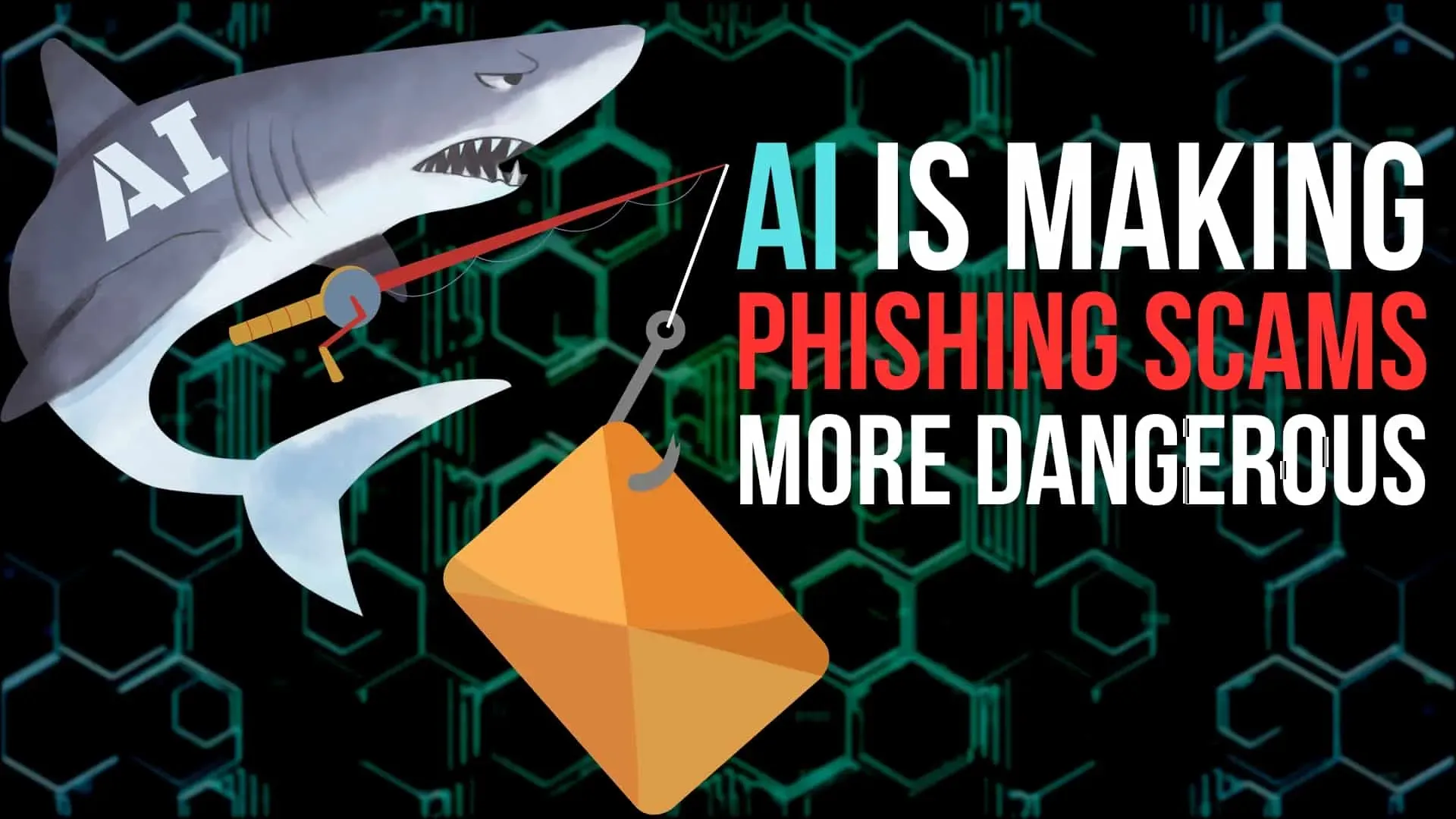AI vishing scams are becoming increasingly prevalent, using sophisticated technology to deceive individuals by mimicking the voices of trusted figures. This alarming trend in voice phishing poses significant risks to both personal privacy and security, necessitating robust vishing prevention measures. With AI impersonation techniques improving rapidly, it’s essential to understand how to avoid vishing to protect yourself from these fraudulent schemes. Awareness of voice phishing risks can empower individuals to recognize the telltale signs of such scams, enabling them to stay one step ahead of malicious actors. As technology evolves, so does the need for effective strategies to protect against vishing scams, ensuring that vigilance remains a key component of personal security strategies.
Voice phishing, popularly known as vishing, represents a growing challenge in today’s technologically advanced landscape, where scams leverage cutting-edge tools to deceive victims. This digital manipulation often involves fraudsters imitating the voices of familiar and authoritative figures, raising concerns about trust and authentication in our communications. Understanding the nuances of how to fend off such scams is essential, as many people remain unaware of the dangers posed by these AI-driven threats. The rise of AI-enhanced con artistry highlights the importance of recognizing deceptive tactics and maintaining a proactive stance against potential fraud. By equipping ourselves with knowledge and protective measures, we can effectively navigate this new frontier of online security.
Understanding AI Vishing Scams and Their Rise
AI vishing scams, or voice phishing scams, have surged with advancements in generative artificial intelligence, enabling malicious actors to impersonate individuals convincingly using audio technology. These scams pose significant risks to both private citizens and public officials, as they exploit the trust inherent in voice communication. The FBI has alerted that perpetrators often target high-profile individuals, leveraging the technology to craft messages that mimic the tone and style of real people, which complicates verification efforts.
The rise of AI vishing scams highlights a crucial aspect of tech security: the need for increased awareness and strategic prevention efforts. Impersonation attacks are not limited to just government officials; they can target anyone, including corporate executives or everyday citizens. Victims may be manipulated into divulging sensitive information or even conducting financial transactions based on false claims made by the impersonator. As these scams become more sophisticated, recognizing and responding to the voice phishing threat is paramount.
How to Recognize and Prevent AI Vishing Attempts
Recognizing the signs of an AI vishing attack can significantly reduce the risk of becoming a victim. Typical indicators include unusual phone numbers, aggressive demands for confidential information, or urgent tones suggesting immediate action. The FBI recommends skepticism when receiving unexpected calls, especially if the caller invokes authority figures or claims to be from recognized institutions. If something feels off — whether due to the caller’s tone or the nature of their request — the best course of action is to hang up and verify the information through known channels.
Furthermore, incorporating vishing prevention techniques into everyday practices can enhance personal security. For instance, individuals should use secure lines during sensitive conversations and refrain from providing personal information without clear verification of the caller’s identity. Leveraging caller ID and encouraging the use of secure messaging apps can also contribute to safeguarding against potential threats. Staying informed about the latest trends in AI impersonation can equip individuals to discern potential scams more effectively.
Steps to Safeguard Yourself Against Vishing Scams
To protect against vishing scams, first, it’s important to implement proactive measures. Start by adopting strong privacy settings on your devices and enable two-factor authentication wherever possible. This ensures that even if an attacker gains access to your personal information, they will still struggle to breach your accounts without a second layer of verification. Additionally, regularly reviewing privacy settings on communication platforms can prevent unauthorized access.
Another effective safeguard against voice phishing is to educate yourself and your community about the risks associated with AI vishing. Sharing knowledge about common tactics used by scammers — like being overly aggressive or requesting sensitive information through seemingly legitimate causes — can empower others to stay vigilant. Attending workshops or participating in community safety initiatives can further strengthen collective awareness and decrease susceptibility to these types of scams.
The Role of Technology in Combating Vishing Attacks
Technology plays a crucial role in both the execution and prevention of vishing attacks. Emerging AI tools are being developed not only to mimic human voices but also to identify and combat vishing attempts. Security firms are implementing advanced algorithms to analyze calls for anomalous patterns that may indicate fraudulent activity. These technologies can alert users in real-time, enabling quicker responses to potential scams.
In addition, organizations are increasingly investing in AI-driven security measures, including voice recognition technology that can help identify authentic communications. By utilizing these advanced tools, companies can significantly lower the risk of vishing incidents. Furthermore, implementing strong cyber hygiene practices in the workplace, along with regular training on new tech-based threats, helps ensure that employees can recognize and respond to vishing attacks more effectively.
The Impact of AI Impersonation on Personal and National Security
The implications of AI impersonation extend beyond financial loss; they pose substantial risks to both personal and national security. For public officials, an effective impersonation could lead to the unauthorized release of sensitive information or irrevocable actions that could compromise national interests. The unsettling reality is that these scams can incite panic or diplomatic tensions if critical information is mishandled due to these malevolent impersonations.
Moreover, on a personal level, individuals affected by vishing scams often experience emotional and psychological distress. Victims may grapple with the violation of trust and feel unsafe due to the ease with which their personal information was exploited. As the landscape of AI technology evolves, so too must our strategies for protection, ensuring both individuals and government entities recognize the risks associated with these impersonation schemes.
Reporting and Responding to Vishing Incidents
When encountering a suspicious call or possible vishing fraud, prompt reporting can prevent further victimization. The FBI has established channels, including online resources like the Internet Crime Complaint Center (IC3), for individuals to report incidents comprehensively. This information not only assists law enforcement in combating current threats but also helps track emerging trends in vishing attacks, contributing to broader preventive measures.
Additionally, educating oneself about the appropriate responses to vishing attempts can create a more informed populace ready to combat these threats. Training resources, such as webinars and community outreach programs, are becoming increasingly available, focusing on how to report incidents and understand the seriousness of these threats. By fostering a proactive mindset, individuals can contribute to communal resilience against voice phishing scams.
Educating the Public on Vishing Risks
Public education is essential in combating the rise of vishing scams. Many people remain unaware of the existence and nuances of voice phishing, making it easier for scammers to exploit their trust. Educational campaigns, possibly in collaboration with tech companies and law enforcement agencies, could play a vital role in raising awareness about how vishing operates and how to spot potential scams. This could include informative workshops, digital content, and interactive seminars targeting both businesses and the general public.
Moreover, integrating vishing education into broader cybersecurity training programs can equip individuals with the knowledge to fend off impersonation attempts effectively. Schools, workplaces, and community centers can host discussions that emphasize the importance of vigilance and critical thinking, particularly in communications. The more informed the public becomes, the harder it is for scammers to succeed in their schemes.
Developing Technology Solutions Against Vishing
As the technology behind vishing scams evolves, so too must the solutions to combat them. Developers are exploring innovative approaches, including deep learning and voice recognition technologies, to detect and block AI-generated impersonations before they reach victims. Implementing such systems in corporate communications platforms could dramatically decrease incident rates and enhance overall security measures within organizations.
Additionally, businesses are encouraged to conduct regular audits of their communication channels and implement cutting-edge authentication methods. These solutions proactively minimize the risks associated with AI impersonation, ensuring that only verified personnel can communicate sensitive information. By embracing advanced security technologies, organizations can create robust defenses against the ever-evolving threat of voice phishing.
Future Trends in Vishing and Preventative Measures
The future of vishing is likely to witness continued evolution, especially with advancements in AI and machine learning. As technology becomes more sophisticated, vishing scams will likely become harder to detect, posing increasing challenges for individuals and organizations alike. Staying ahead of these trends is crucial for developing effective prevention strategies that can adapt to changing tactics employed by scammers.
Preventative measures must also evolve in tandem with the threats posed by AI vishing. Organizations should prioritize regular training for employees on emerging scams and tactics, keeping them informed about new developments in voice phishing. By fostering a culture of awareness and readiness, businesses and individuals can better protect themselves against potential AI impersonation threats.
Frequently Asked Questions
What are AI vishing scams and how do they work?
AI vishing scams, or voice phishing scams, use artificial intelligence to create realistic audio impersonations of individuals, often public figures, to deceive victims into sharing sensitive information. Scammers utilize AI tools to replicate voices and mimic speech patterns, making it difficult for recipients to detect the fraud.
How can I protect against vishing scams?
To protect against vishing scams, always verify the identity of callers, especially if contacted through unfamiliar phone numbers or platforms. Use trusted communication methods to confirm a sender’s identity, pay attention to speech patterns for inconsistencies, and avoid sharing personal information or money over the phone.
What are the voice phishing risks associated with AI impersonation?
AI impersonation increases voice phishing risks by making it easier for scammers to convincingly impersonate trusted individuals. This technology can lead to unauthorized access to sensitive information, financial loss, and manipulation of victims, as the human-like audio makes it harder to discern scams from legitimate communications.
What steps should I take if I receive a suspicious call?
If you receive a suspicious call, hang up immediately. Do not share any personal information. Verify the caller’s identity through a separate communication method with the suspected person. If concerned, report the incident to your local authorities or the FBI for further guidance.
How to avoid vishing scams in everyday communication?
To avoid vishing scams, maintain skepticism towards unsolicited calls, especially those asking for sensitive data. Enroll in the Do Not Call registry, monitor your accounts for unusual activity, and use secure platforms for sensitive communications to reduce the risk of falling victim to voice phishing.
What should I do if I believe I’ve been targeted by a vishing scam?
If you believe you’ve been targeted by a vishing scam, document all details of the interaction and report it to your local FBI field office or the Internet Crime Complaint Center (IC3). It’s key to act quickly to mitigate potential damage.
What are some common signs of vishing attacks?
Common signs of vishing attacks include unsolicited calls, aggressive demands for personal information, urgent requests to confirm details like your address or social security number, and obvious pressure to act quickly to avoid negative consequences. Always be cautious and verify.
How does AI technology enhance the effectiveness of vishing scams?
AI technology enhances vishing scams by enabling scammers to create highly convincing voice mimics of trusted individuals. As AI-generated voices improve in realism, scammers can exploit these tools to execute more effective, sophisticated impersonation schemes.
| Key Point | Details |
|---|---|
| AI Vishing Definition | AI vishing is a type of scam where perpetrators use AI-generated audio to impersonate individuals, particularly high-profile officials. |
| Targeted Victims | Current and former senior U.S. officials are increasingly targeted by such scams. |
| Recent Incidents | Notable victims include Marco Rubio and Susie Wiles, whose identities were impersonated through AI. |
| FBI Advisory | The FBI issued a warning advising individuals to verify the identity of unknown callers. |
| Indicators of Vishing | Signs include unsolicited calls, requests for personal information, and signs of urgency. |
| Protective Measures | Verify caller identity via trusted sources, avoid sharing personal info, and report scams to authorities. |
| Future Implications | Advancements in AI technology may increase the frequency and difficulty of identifying such scams. |
Summary
AI vishing scams represent a new and sophisticated threat, utilizing advanced AI technologies to impersonate well-known public figures with alarming accuracy. As these scams become more prevalent, it is essential for individuals and organizations to stay informed and adopt proactive measures to protect against potential impersonation and information theft. Awareness and verification are key strategies in mitigating the risks associated with AI vishing scams.



